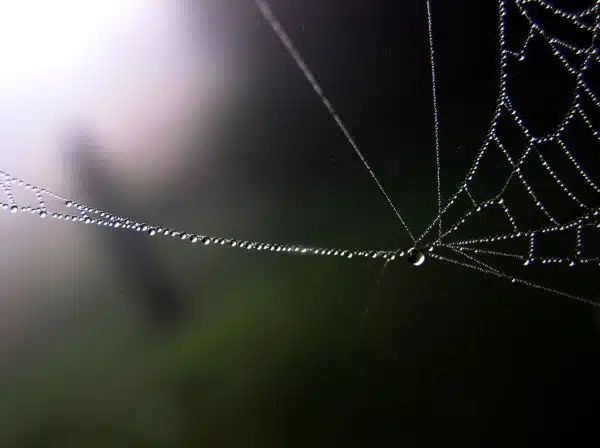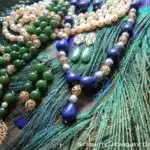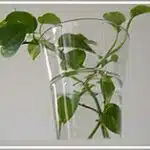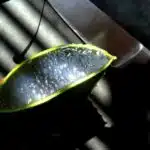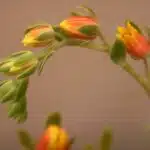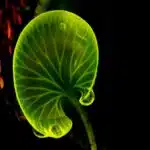String of Pearls is an unusual and fascinating plant with long trailing stems that drape elegantly over the sides of pots and baskets. It is a succulent plant that belongs to the Senecio genus and is native to South Africa. This plant has become increasingly popular among horticulturists, gardeners, and houseplant enthusiasts due to its striking appearance and low maintenance requirements.
Propagating String of Pearls is relatively easy, making it an ideal option for those looking to increase their collection or share cuttings with friends. With just four simple steps, anyone can propagate this plant successfully. In this article, we will explore the necessary materials needed, explain how to prepare your cuttings, outline the propagation process itself, and provide some tips for ensuring your new plants thrive after transplantation. By following these steps closely, you will be able to successfully propagate String of Pearls in no time.
Understanding String Of Pearls
Types of succulent are a fascinating addition to any garden or indoor space. One variety that has become increasingly popular with plant enthusiasts is the String of Pearls, also known as Senecio rowleyanus. This plant features long trailing stems adorned with small spherical leaves that resemble pearls, hence its name. Native to Southwestern Africa, this member of the Asteraceae family is easy to care for and can be propagated with ease.
String of Pearls care involves providing it with bright but indirect sunlight, well-draining soil, and occasional watering. This succulent thrives in warm temperatures and low humidity environments. Overwatering or exposure to direct sunlight can cause the leaves to turn yellow or drop off entirely. Thus, it’s essential to provide adequate drainage and avoid leaving water in the container’s saucer.
To propagate String of Pearls successfully, one must understand its growth habits. The plant grows from rhizomes along its stem, which develop roots when placed in contact with soil or water. These rhizomes produce new shoots that will grow into mature plants when given proper light and moisture conditions. By following these simple steps, you’ll be able to propagate your own String of Pearls and expand your collection without having to purchase new plants regularly.
Moving onto identifying materials for propagation, we must first gather our tools before beginning the process.
Identifying Materials For Propagation
- When it comes to propagating string of pearls, the type of soil is important as it affects the water-holding capacity and nutrient levels.
- It is recommended to use a soil mix that includes both coarse and fine particles for optimal drainage and aeration.
- Typically, a potting container with several drainage holes is suitable for propagating string of pearls, as it helps to reduce the chance of waterlogging and root rot.
- When it comes to watering, string of pearls requires moderate amounts of water, as too much or too little can cause the roots to become damaged.
- During the summer months, it is important to water the string of pearls deeply and regularly in order to keep the soil consistently moist.
- During the winter months, it is important to reduce the amount of water given, allowing the soil to dry out slightly between watering sessions.
Soil Types
As a horticulturist, identifying the best soil types is crucial for propagating string of pearls. Best practices suggest using well-draining soils with a pH range between 6.0 and 7.5 to ensure healthy growth. The ideal soil type should also be rich in organic matter, allowing for adequate moisture retention while preventing waterlogging.
Common mistakes when identifying soil types include using heavy clay soils or those with poor drainage. Heavy clay soils can cause root rot and stunt growth due to their inability to drain excess water effectively. Additionally, soils lacking in organic matter can lead to nutrient deficiencies, resulting in stunted growth and yellowing leaves.
In summary, selecting the right soil type is essential for successful propagation of string of pearls. Avoid common mistakes by opting for well-draining soils rich in organic matter and within the optimal pH range. By following these best practices, you can ensure your plants thrive and serve others looking to propagate this unique succulent.
Potting Containers
Identifying the right materials for propagation involves more than just selecting the right soil type. The choice of pots or containers used can also impact the success of propagating string of pearls. Choosing the right size and type of container is crucial in ensuring healthy growth and development of these plants.
When selecting a pot for your string of pearls, it is important to choose one that is not too large or too small. An overly large pot can lead to waterlogging, which can ultimately lead to root rot, while a small pot will restrict growth and hinder proper nutrient absorption. It’s best to choose a container that is slightly larger than the plant’s root system, allowing room for growth without drowning the roots.
In addition to choosing the right size container, consider decorating with string of pearls planters to add visual interest to your space. String of pearls look beautiful in hanging baskets or placed on shelves where their trailing stems can be appreciated. When choosing decorative planters, ensure they have drainage holes and are made from materials that won’t hold onto excess moisture, such as ceramic or terracotta pots. By taking these factors into consideration when selecting your pots or containers, you can help ensure successful propagation and healthy growth for your string of pearls plants.
Water Requirements
Identifying the appropriate materials for propagation is essential to ensure healthy growth and development of string of pearls. Along with choosing the right size and type of container, it is equally crucial to understand their water requirements. Watering techniques play a significant role in the successful propagation of these plants.
String of pearls requires optimal moisture levels to thrive, which means watering them correctly is critical. Overwatering can lead to root rot, while underwatering can cause dehydrated and wilted leaves. A good rule of thumb is to water the plant when the top inch of soil feels dry. During the growing season, it’s best to increase watering frequency and reduce during dormant periods.
To maintain optimal moisture levels, it’s important to use well-draining soil that allows excess water to drain out quickly. Additionally, using pots with drainage holes helps prevent waterlogging and promotes healthy root growth. While watering your string of pearls, avoid getting water on its leaves as this can cause damage or lead to fungal infections. By following these watering techniques and ensuring optimal moisture levels for your string of pearls, you can help promote successful propagation and healthy growth.
Preparing Your Cuttings
After identifying the materials for propagation, it is time to prepare the cuttings. The first step is to make sure that your string of pearls plant has healthy and long stems. These stems will serve as the source of your cuttings. Using a sharp and clean pair of scissors or pruning shears, cut a stem that is at least four inches long just below a node. It is important to make a clean cut to avoid damaging the stem.
Next, dip the end of the cutting into rooting hormone. This will encourage root growth in your new plant. Choose a rooting hormone that contains indole-3-butyric acid (IBA) which is ideal for succulent plants like string of pearls. After dipping, shake off any excess powder before planting it in soil.
The length and depth of your cutting are crucial in ensuring successful propagation. Cuttings need at least two nodes on them to ensure proper root growth and stability. Plant the cutting one inch deep into well-draining soil with good moisture retention properties. Make sure not to overwater your newly planted cutting as too much water can cause root rot and hinder its growth potential.
Transition: Choosing the right soil is crucial in growing healthy plants from cuttings.
Choosing The Right Soil
Metaphorically speaking, the soil is the foundation of a plant’s life. Without a sturdy foundation, a plant will struggle to grow and may not even survive. Therefore, selecting the right soil for your string of pearls is crucial to its growth and overall health.
Soil selection for string of pearls should be well-draining with high porosity. This means that it should allow water to drain well while still retaining enough moisture for the plant’s roots to absorb. A soil mix made up of peat moss, perlite, and sand works exceptionally well for this purpose. Avoid using heavy soils like garden soil, which can cause root rot due to poor drainage.
Potting conditions are equally important when it comes to string of pearls propagation. The pot you choose should have adequate drainage holes at the bottom and be slightly larger than the plant itself. When repotting your string of pearls, ensure that the new pot is no more than one size larger than its previous container as transplanting into a significantly larger pot can lead to overwatering or underwatering issues.
In making your choice for the right soil mix and potting conditions for your string of pearls, keep in mind that these choices should always favor your plant’s growth and development needs. The next step in propagating your string of pearls is finding the perfect pot that meets these criteria.
Finding The Perfect Pot
Pot size is an important consideration when propagating string of pearls. The plant has a trailing habit and looks great in a hanging basket. When selecting a pot, choose one that is slightly larger than the root ball to allow for growth. A pot that is too large can lead to overwatering, which can be detrimental to the plant’s health.
Hanging options are also something to consider when selecting a pot. You may opt for a traditional hanging basket or get creative with other options such as repurposing a teacup or using a macrame hanger. Whatever option you choose, make sure it is secure and able to support the weight of the plant as it grows.
Ultimately, finding the perfect pot for your propagated string of pearls is all about balance. It should be large enough to accommodate growth but not so big that it leads to overwatering. Additionally, the hanging option should be both functional and visually appealing in your space.
When you have found the perfect pot and hanging option for your new plants, it’s time to move on to watering them properly.
Watering Your New Plants
How often should you water your new string of pearls plants? This is a common question that many people have when it comes to caring for these delicate succulents. The answer is not as straightforward as you might think, as the watering frequency will depend on various factors, such as the size of the plant, humidity levels in your home, and the type of soil used.
To help ensure optimal moisture levels for your string of pearls plants, there are a few basic guidelines to follow. Firstly, it’s essential to use well-draining soil that does not retain too much moisture. Overwatering can lead to root rot and ultimately kill your plant. Secondly, try not to water the leaves directly but focus on watering the soil around them. Lastly, check regularly if your plant needs watering by sticking your finger into the soil about an inch deep – if it feels dry, it’s time to water.
As a general rule of thumb, you should aim to water your string of pearls plants every two weeks during its growing season (spring and summer) and reduce this frequency during its dormant season (fall and winter). However, it’s crucial to remember that every plant is unique and may require different watering schedules. By closely monitoring your plant’s growth patterns and adjusting accordingly, you’ll be able to provide optimal care that will lead to healthy growth over time.
When it comes to caring for your new string of pearls plants, watering is only one aspect – adding fertilizer is another critical step in ensuring their long-term health. But before we dive into that topic, let’s discuss some common mistakes people make when watering their plants.
Adding Fertilizer
After watering your new plants, it is important to provide them with the necessary nutrients to promote healthy growth. Organic fertilizers are a popular choice among horticulturists due to their numerous benefits. Unlike traditional fertilizers, organic fertilizers are made from natural materials and do not contain harmful chemicals that can harm both your plants and the environment.
One of the benefits of using organic fertilizer is that it improves soil fertility over time. Organic fertilizers contain microorganisms such as bacteria and fungi that help break down organic matter into essential nutrients that plants need for growth. This process also increases soil health by improving its ability to retain water and reduce erosion. Additionally, organic fertilizers release nutrients slowly over time, providing a steady supply of nutrients for your plants without the risk of nutrient burn.
If you prefer not to use traditional or organic fertilizers, there are alternatives available. Compost tea is a natural alternative made by steeping compost in water and straining out the solids. It contains beneficial microorganisms that help improve soil health and provide nutrients for your plants. Another option is using bone meal or blood meal, which are high in nitrogen and phosphorus respectively. However, it is important to research these alternatives before use as they may not be suitable for all types of plants.
Providing adequate light is crucial for plant growth and development. In the next section, we will discuss how to ensure your string of pearls receive enough light to thrive without causing damage.
Providing Adequate Light
- Sunlight is essential for the growth and health of string of pearls, and should be factored into their cultivation.
- It is important to ensure that the area they are kept in is exposed to a good amount of sunlight, but not too much that it will scorch the plant.
- Light bulbs are a good option for providing adequate light to string of pearls when natural sunlight is not available.
- The light given off by light bulbs should be of the same spectrum as natural sunlight.
- Shade should also be considered when providing adequate light for string of pearls, as too much light could cause damage to the plant.
- To ensure the best results, the combination of natural sunlight and light bulbs should be used when providing light for string of pearls.
Sunlight
Indoor positioning plays a vital role in providing adequate sunlight for your string of pearls. This succulent plant requires bright but indirect sunlight, and placing it near a window with north or east-facing orientation can provide the right amount of light. However, if the window receives direct sunlight, it may scorch the leaves and damage the plant growth. Therefore, it is crucial to position your string of pearls in a spot where it can receive filtered sunlight.
Another way to ensure proper indoor positioning is by using artificial lighting. LED grow lights mimic natural sunlight and provide similar benefits for plant growth. You can install them above your string of pearls and set them on a timer to replicate day-night cycles. This method works best when you live in regions that experience long periods of darkness or when you cannot find an ideal spot near a window.
In conclusion, providing adequate light for your string of pearls is essential for its growth and well-being. Whether you choose natural or artificial lighting, always ensure appropriate indoor positioning to prevent sunburns or other damages caused by excess light exposure. By following these tips, you can propagate your string of pearls successfully and enjoy their beauty for years to come.
Light Bulbs
To provide adequate light for your string of pearls, there are various options available to you. One of the most popular and energy-efficient methods is using LED grow lights. These bulbs mimic natural sunlight and can provide similar benefits for your plant’s growth. They are also ideal for those living in regions with long periods of darkness or when an appropriate spot near a window is not available.
When choosing LED grow lights, it is crucial to consider their wattage and color temperature. A higher wattage bulb can generate more heat and light, which may not be suitable for all plants. Similarly, color temperature can affect how the plant grows and behaves. For example, warm white light promotes flowering, while cool white light encourages vegetative growth.
Another option for providing adequate lighting is using decorative bulbs. These bulbs come in various shapes, sizes, and colors and are perfect for adding ambiance to your home while also providing enough light for your plants. However, it is essential to select decorative bulbs that emit the right amount of light required by your string of pearls to prevent damage caused by excess exposure.
In summary, choosing the right type of bulb is crucial when providing adequate lighting for your string of pearls. Energy-efficient LED grow lights mimic natural sunlight, while decorative bulbs offer both functionality and aesthetic appeal. It is important to consider factors such as wattage and color temperature when selecting bulbs to ensure optimal plant growth and well-being.
Shade
Shade tolerance is another important factor to consider when providing adequate lighting for indoor plants, including the string of pearls. These plants are naturally shade tolerant and prefer indirect light rather than direct sunlight. Therefore, it is crucial to provide sufficient but not excessive light to avoid damaging the plant.
One way to ensure that your string of pearls receives the right amount of shade is by placing it in a shaded area or using sheer curtains to filter the sunlight. Alternatively, you can use a grow light with adjustable settings, allowing you to control the level of light your plant receives. This method is ideal for people living in regions with limited natural light or for those who do not have access to a well-lit window.
In conclusion, shade tolerance is an essential consideration when providing adequate lighting for indoor plants such as the string of pearls. Providing sufficient but not excessive light can help promote healthy growth and prevent damage caused by overexposure to direct sunlight. By utilizing appropriate shading techniques or adjustable grow lights, you can ensure optimal plant health and well-being.
Monitoring Growth Progress
Measuring growth and recording progress is an essential step in propagating string of pearls. It allows gardeners to keep track of the plant’s development and make necessary adjustments to the growing conditions. One way to measure growth is by observing the length of the stems and the number of leaves that have sprouted. Gardeners can use a ruler or measuring tape to document these changes weekly or biweekly.
Another way to monitor growth progress is by taking photographs of the plant at regular intervals. This method provides visual documentation, which can be helpful when comparing how much the plant has grown over time. It also serves as a useful reference point when sharing updates with other gardeners or seeking advice from experts.
Recording progress is not only beneficial for monitoring growth but also for troubleshooting any issues that may arise during propagation. By keeping track of changes in stem length, leaf count, and overall health, gardeners can identify problems early on and take corrective action promptly. This approach increases the chances of successful propagation and ensures that gardeners are equipped with accurate information about their plants’ progress.
As the plant continues to grow, it is essential to pay attention to its root development. The next section will cover how to assess root development, which is crucial for ensuring healthy and robust plants. Understanding root development will help gardeners determine when it’s time to transfer their string of pearls into a larger pot or move them outdoors if they are being grown indoors.
Root Development
As your string of pearls starts to grow, it is important to monitor its progress regularly. This means observing its growth rate and checking for any signs of distress or disease. By doing so, you can take the necessary steps to ensure its optimal health and productivity.
One important aspect to consider when propagating your string of pearls is watering frequency. While these plants do not require a lot of water, they do need to be consistently hydrated. This means watering them once every two weeks, or whenever the soil feels dry to the touch. Overwatering can lead to root rot, which can be fatal for your plant.
Temperature requirements are another crucial factor in the propagation process. String of pearls prefer warm temperatures, ideally ranging between 70-80°F (21-27°C). If exposed to cooler temperatures for extended periods of time, they may become stressed and more susceptible to disease. Therefore, it is important to keep them in a warm and stable environment throughout the propagation process.
As your string of pearls continues to thrive under ideal conditions, you may begin considering transplanting your new plants into larger containers or outdoor gardens. However, before doing so, it is important to carefully research and prepare the appropriate planting environment for your new plants. With proper care and attention, your propagated string of pearls will continue growing into beautiful and healthy plants for years to come.
Transplanting Your New Plants
As a horticulturist, you must be aware of proper transplanting techniques to ensure the healthy growth of your new plants. String of pearls is a succulent that is easy to propagate and transplant. However, it still requires careful attention during the transplanting process.
Firstly, ensure that the new pot is slightly larger than the current one. Use well-draining soil and add organic matter for added nutrients. Gently remove the plant from its old pot and loosen the soil around its roots. Then, place it in the center of the new pot and fill with soil until it reaches the same level as before.
Secondly, water your string of pearls after transplanting but avoid overwatering to prevent root rot. Give it enough sunlight but avoid placing it under direct sunlight as this can cause sunburns on its delicate leaves.
Lastly, proper growth management is necessary for your newly transplanted string of pearls. Fertilize every two weeks during growing season with a balanced fertilizer such as a 10-10-10 mix. Prune any damaged or dead leaves to encourage new growth and maintain a neat appearance.
With these transplantation techniques and growth management tips, your string of pearls will thrive in its new home. In caring for mature string of pearls, you must continue providing optimal conditions to promote healthy growth and prevent any issues that may arise.
Caring For Mature String Of Pearls
After successfully transplanting your new string of pearls plants, it’s time to focus on their care and maintenance. As with any plant, proper watering and sunlight are crucial factors in ensuring its growth and survival. String of pearls thrives in bright, indirect light and requires infrequent watering to prevent overwatering.
Aside from these basic care requirements, pruning techniques are also essential for maintaining healthy string of pearls plants. Regular trimming helps encourage new growth and prevents the plant from becoming too leggy. To prune, simply use clean, sharp scissors or shears to snip off any overgrown stems or dead leaves.
In addition to pruning techniques, soil requirements must also be considered when caring for mature string of pearls. These plants prefer well-draining soil that is rich in organic matter. A mixture of cactus soil and perlite is ideal for this purpose as it allows for adequate drainage while providing necessary nutrients.
By following these basic care guidelines and utilizing proper pruning techniques and appropriate soil requirements, you can ensure the healthy growth of your string of pearls plants. However, there are common problems that may arise despite your best efforts at care. In the next section, we will discuss some common issues that may occur with these plants and provide solutions to address them effectively.
Common Problems And Solutions
Pests can be a common problem for string of pearls, and can be avoided by regularly checking for signs of infestation. Light requirements for string of pearls should be indirect but bright, as direct sun can cause the leaves to burn. Good soil quality is essential for string of pearls; well-draining soil with a neutral pH is recommended. Watering string of pearls should be done regularly, as the soil should never be allowed to dry out entirely. Additionally, a balanced fertilizer can be used every two weeks during the growing season for best results. Finally, regular pruning of dead or damaged leaves should be done to ensure the plant stays healthy and grows properly.
Pests
As a horticulturist, it is important to be aware of the common pests that can affect the health of string of pearls plants. These succulents are particularly susceptible to mealybugs, spider mites, and scale insects. Mealybugs are small white insects that feed on the sap of the plant and leave behind a sticky residue. Spider mites, on the other hand, are tiny arachnids that create webs on the leaves and cause them to yellow and wither. Lastly, scale insects latch onto the stems and leaves, sucking out their nutrients.
Fortunately, there are natural remedies for these common pests that can be used before resorting to chemical treatments. For mealybugs and spider mites, a simple solution of water and dish soap can be sprayed onto the affected areas. This will suffocate the pests without harming the plant. Similarly, rubbing alcohol or neem oil can be applied to scale insects to effectively eliminate them.
While chemical treatments may seem like a quick fix for pest problems, they should only be used as a last resort as they can harm beneficial insects and pollute the environment. As a responsible horticulturist, it is important to first try natural remedies before turning to chemicals. By being vigilant about pest management and using natural solutions when possible, we can ensure healthy growth for our string of pearls plants.
Light Requirements
As a horticulturist, it is important to understand that the health of string of pearls plants can be affected by various factors. While pests are a common problem, it is equally important to pay attention to the light requirements of these succulents. String of pearls plants prefer bright, indirect sunlight and can thrive both indoors and outdoors.
When grown indoors, string of pearls plants need access to natural light or artificial lighting options such as fluorescent lights or LED grow lights. These artificial lighting options can provide the necessary light intensity and duration for optimal growth. However, it is important to ensure that the plant is not placed too close to the light source as this can cause damage.
If grown outdoors, string of pearls plants should be placed in an area with partial shade to protect them from direct sunlight. Too much direct sunlight can cause sunburn and damage the leaves. By providing adequate light for our string of pearls plants whether through natural or artificial sources, we can ensure their healthy growth and prevent common problems related to insufficient light levels.
Soil Quality
As horticulturists, we must understand that soil quality plays a significant role in the healthy growth of string of pearls plants. Soil preparation is crucial and should involve the use of well-draining potting mixtures to ensure optimal root growth. These succulents have specific nutrient requirements, and it is important to ensure that their soil contains adequate nutrients.
String of pearls plants thrive in well-aerated soil with a pH level ranging from 6.0 to 7.5. The ideal soil mixture should include perlite, sand, and peat moss to improve drainage and aeration. Additionally, adding organic matter such as compost or worm castings can enhance the nutrient content of the soil.
Overwatering is a common problem among string of pearls plants, leading to root rot and ultimately killing the plant. To prevent this problem, it is essential to avoid using heavy soils that retain moisture for prolonged periods. Adequate drainage holes in pots also promote proper drainage and prevent waterlogging. By paying attention to soil quality and ensuring that our string of pearls plants receive adequate nutrients while avoiding overwatering, we can maintain their health and prevent common problems associated with poor soil conditions.
Frequently Asked Questions
Propagation techniques for the string of pearls plant are relatively straightforward and can be accomplished by even novice gardeners with minimal effort. The first step is to identify a healthy stem on the parent plant that has several leaves attached. Next, cut the stem just below one of the leaves using sharp scissors or pruning shears. It’s important to make a clean cut to avoid damaging the remaining part of the parent plant.
Once the cutting has been taken, it’s time to prepare it for rooting. Fill a small container with moist potting soil or perlite and insert the cutting into it so that at least one leaf node is buried just beneath the soil surface. Keep the soil consistently moist but not waterlogged, and place the container in a warm, bright location out of direct sunlight. Within a few weeks, roots should begin to form and new growth will emerge from the top of the stem.
If you encounter any problems during propagation such as yellowing leaves or stunted growth, there are several troubleshooting tips that can help you get back on track. One common issue is overwatering, which can cause root rot and prevent successful rooting of your cutting. To avoid this problem, make sure that your container has good drainage and that you only water when the soil feels dry to the touch. Additionally, ensure that your cutting is not in direct sunlight as this can scorch delicate new growth.
In conclusion, propagation of string of pearls plants can be an enjoyable and rewarding experience for gardeners of all skill levels. By following these simple techniques and troubleshooting tips, you can successfully create new plants from cuttings and expand your collection with ease.
Conclusion
It is often said that patience is a virtue. This holds true even in the world of horticulture, where propagating plants requires a considerable amount of time and effort. As we have discussed earlier, propagating string of pearls involves four easy steps. However, the key to successfully propagating these plants lies in exercising patience.
The benefits of propagation cannot be overstated. Not only does it allow you to expand your collection of plants, but it also gives you the opportunity to share them with others. Furthermore, propagation helps maintain genetic diversity and enhances the resilience of plant populations.
To ensure success in your propagation efforts, it is important to remember that Rome wasn’t built in a day. Patience is essential when waiting for your cuttings to take root and grow into healthy plants. With a little bit of care and attention, you will soon have a thriving collection of string of pearls plants that can be enjoyed for years to come.
- Tips for Exercising Patience
- Stay consistent with watering schedule
- Avoid over-fertilizing as this may harm young roots
- Benefits of Propagation
- Expands plant collection
- Enhances genetic diversity – Enhances genetic diversity which can make the plant more resilient to environmental changes.
Conclusion
String of pearls is a popular succulent plant known for its long, trailing vines that resemble strings of beads. Propagating this plant is easy and can be done in four simple steps. First, understanding the plant’s growth habits and identifying the necessary materials for propagation is important. Second, preparing your cuttings by selecting healthy stems and removing any damaged leaves or nodes is crucial for success. Third, choosing the right soil mixture will ensure optimal growth conditions for your new plants. Finally, finding the perfect pot with proper drainage is essential.
Once your string of pearls has matured, it requires minimal care to thrive. Common problems such as root rot or pests can be easily resolved with proper watering techniques and pest control measures. Frequently asked questions regarding propagation, care tips, and common problems are also addressed to provide comprehensive guidance.
According to a survey conducted by the National Gardening Association in 2020, over 90 million Americans participated in some form of gardening activity during the year. The popularity of succulent plants like string of pearls has skyrocketed in recent years due to their low maintenance requirements and visually appealing characteristics. As horticulturists continue to explore innovative methods for propagating these unique plants, more people are discovering the joy of growing their own indoor gardens.
Image Credits
- “A String of Pearls” by Jason A. Samfield (featured)

